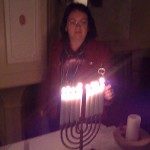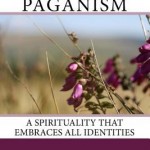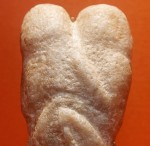“Then allow me to enter the grove:
I am the child of Panpsyche
and the offspring of Panhyle—
I am favored with a noble and extensive lineage;
I am desired of all and a joy to each;
I am the culmination of all love…
I am Paneros.
I am the love that conquers everything.
And I will enter this grove
for I already live there.”—All-Soul, All-Body, All-Love, All-Power: A Transmythology, p. 117
I’ll be up front and say that this book is not going to be everyone’s cup of tea. If it’s yours, though, you’ll probably want to drink the whole pot.
A Transmythology is an original epic poem by P. Sufenas Virius Lupus. Its narrative involves the conception, birth, and awakening to self of a group of four transgender and/or fluidly-gendered deities called the Tetrad. Their names—Panpsyche, Panhyle, Paneros, and Pancrates—translate literally to the English words of the title (All-Soul, All-Body, All-Love, All-Power).
I have to admit that when I realized the book was an epic poem, I was skeptical, and not from lack of experience with the genre. My PhD specialization was in religion and literature, and I’ve read Homer, Chaucer, Dante, Milton and others with varying levels of engagement and enjoyment. In popular culture, epic poetry is often seen as so formal as to be inaccessible (and dry translations make it more so). This was often not the case with their original audiences, however. I remember what a revelation it was to hear Stanley Lombardo perform parts of his translation of the Odyssey. His interpretation aimed to help us hear the text as the Greeks would have heard it: and the Odyssey, my friends, is rough and raunchy, full of derring-do and heroism. The stiff nineteenth-century British translations that are often stuffed down our throats in school don’t capture its spirit.
Reading A Transmythology, you can tell PSVL has done eir homework. The poem is stately and gritty, erotic and erudite, and full of references to ancient and medieval myth and poetry—more, I’m sure, than I noticed myself. (The passage I quote above, I believe, is an allusion to a tale of the Irish hero or deity Lugh, who is admitted to the castle of the king because although the castle already hosts a master of each art, no one but Lugh is the master of them all.) The poem is also Not Safe For Work—so, dear reader, you have been warned. 🙂
Most obviously, A Transmythology contributes to the project of developing specifically transgender and queer Pagan traditions. The story itself explores some of the pain as well of the joy of being unconventionally gendered, and how the new gods come to terms with their natures is a significant part of the storyline. There is material here that can be used for healing as well as for empowerment, not just about what it means to be transgender or genderqueer, but also with regard to nontraditional families. PSVL makes it clear that e is doing ongoing devotion to these deities, and e invites the interested reader to do so as well.
The book also brings the reader face to face with the real mechanisms of religious innovation. As Pagans, I suspect we are all at least dimly aware that the roots of myth and ritual are in the spiritual experiences of individuals. Somewhere in the distant past, there was always a first time the story of a god was told, a vision or moment of inspiration or even just an imaginative framing of an important truth. Our gods come to us sometimes as revelation, sometimes as literary creation, sometimes as a tangle of both. In some strands of Paganism, in fact, artistic inspiration and divine creation are considered to be expressions of the same underlying life force–so the issue of whether there is a difference between “discovering” and “creating” a god becomes a complex theological question.
Lupus describes a uncomfortable process of bodily pain, uncanny dreams, and consultations with oracles ending in a burst of artistic production that became A Transmythology. Eir account is refreshingly lacking in attempts to legitimize eir work with shaky connections to historical traditions. And while it is possible to read eir account as claiming authority through this ordeal, I read it as a straightforward description of what being a devotional artist can look like—it may be harrowing, and it may sometimes look like madness, but if the process is successful, the results can be an inspiration to others.
PSVL’s work embraces process theology, a system of thought that sees the world and divinity as ever-changing, with human beings as a fully integrated part of the process. Eir fundamental vision is of new gods emerging from the old, yet not usurping them—these new and old gods are bound together by family ties. I hope that A Transmythology similarly inspires others to ground their writing in existing myth and literature, while also seeking new approaches to the questions of our time.
















